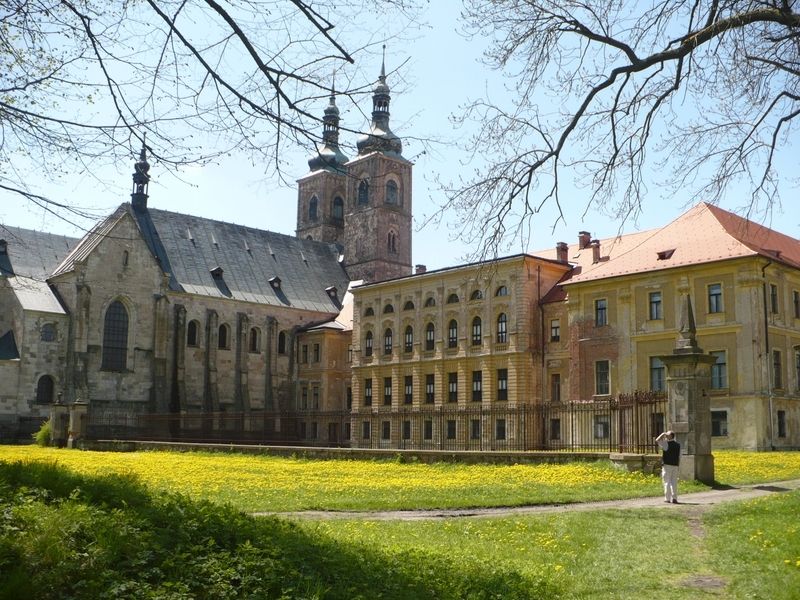Premonstratensian monastery in Teplá

Immerse yourself in the spiritual atmosphere of Teplá Monastery, which is located not far from Mariánské Lázně. The monastery was founded in the end of 12th century by the beatified Hroznata.
The Teplá village with Premonstratensian Abbey is located on the left bank of the Tepla River in Tepelská highlands, 1.5 km south of Teplá and 12 km east of Mariánské Lázně.
According to the monastery legend, it was founded by Hroznata in 1193 and called Premonstratensian religious in from Strahov, Prague. The monastery foundation was an Exchange deed for not having to participate in the III. Crusades. At the end of the century, the Hroznata entered himself among the orderly religious brothers and became the administrator of monastic property. It had become fatal to him because on one of his inspection visits he was captured by robbers who demanded ransom for his release. Although it was paid, Hroznata was killed in 1217. Since then he has been worshiped as a martyr, from 16 September, 1897. In 1232, the church monastery was consecrated by the Prague Bishop, the feast was attended by the Czech King Václav I. The Tepelská colony then experienced the period of prosperity and downfall at the same time.
The monastery has been affected by a plague epidemic several times, faced with the attack by nearby nobles, but fortunatelly has been evaded by Hussite storms. Other difficult times meant the coming of the Reformation, as well as the Thirty Years' War. After the second defenestration in Prague, Chancellor Slavata found temporary shelter in Teplá, so the monastery of Frederick Falcký was severely damaged by the troops. In 1641 and 1648 the monastery was sacked by the Swedes. In 1659 the buildings of the Convent and the Prelature were destroyed the fire.
Neverthless, the monastery in Teplá raised up from the ashes. Original buildings were repaired and new were built. At the request of Abbot Raimund II Wilfert, the architect K. Dientzenhofer gave them its Baroque look. The next flourishing of the monastery was connected with the local healing springs. Major Kryštof Heřman, Count Trauttmannsdorf-Weinsberg, made the contribution to it. He made monastery the center of arts and science. The school and a noble convent were founded as well. The monastery in Teplá stood at the origin of Mariánské Lázně.
During World War II, the cannon was abused for the needs of Germany. In one part there was a prison camp, the other was a volunteer maternity hospital for Hitler's army. After the war, German members of the order were expelled and in 1950 some of the brothers were imprisoned and the monastery was used by Čs. army as barracks. After the social changes in 1989, the monastery was returned to the premonstratensians, and already in December, Abbot Heřman Josef Tyl served the first Mass. Nowadays, the Teplá cannon has 18 members and manages parishes in many places in western Bohemia. The monastery is open to the public.
Nowdays, the monastery complex consists of a baroque convent, Gothic presbytery of a monastery church with a Romanesque chapel, monastery library, park, cemetery and museum. The most important building is the Church of the Annunciation of the Virgin Mary. It was built in the years 1193-1232 as a Romanesque-Gothic three-nave church. Further, you can see the farm buildings of the brewery, the hayloft, and the granaries.
